Navigating the world of retail returns can often feel overwhelming, right? Whether you've received an item that doesn't quite match your expectations or simply changed your mind, knowing your rights is essential. Our return and refund policy is designed to make your shopping experience as seamless as possible, ensuring you feel confident every step of the way. Curious to learn more about how we handle returns and refunds? Keep reading!

Clear eligibility criteria
Retail return and refund policies establish clear eligibility criteria to ensure customer satisfaction and operational efficiency. Customers must retain original receipts for purchases, demonstrating transaction validity within a specified return window, typically ranging from 30 to 90 days depending on the store. Products should remain in original condition, including packaging and tags, without signs of wear or usage. Certain items, like electronics or intimate apparel, may have additional restrictions, influencing return eligibility. Refunds may be issued in the original form of payment or as store credit, depending on company guidelines. Understanding these criteria ensures seamless transactions and enhances customer experience in retail environments.
Timeframe for returns
Retail return policies often stipulate a specific timeframe for customers to initiate returns. Typically, this period ranges from 30 to 90 days from the date of purchase, depending on the retailer's guidelines. Customers are generally required to retain their original receipts or order confirmations as proof of purchase to facilitate the return process. Some retailers offer extended return windows during holiday seasons, such as the post-Christmas period, allowing customers ample time to decide on their purchases. Additionally, certain categories of items, including electronics or undergarments, may have stricter return conditions, limiting the return window or requiring products to be unopened and in their original packaging to be eligible for a refund.
Condition of returned items
Retail return and refund policies typically require items to be in new, unopened condition for a full refund. Items must include original packaging, tags, and all accessories. Returns of used or damaged items may incur restocking fees or be denied altogether. Additionally, specific time frames such as 30 days from the purchase date often apply for returns, ensuring a clear process for customers seeking refunds. Retailers should provide customers with detailed instructions on how to initiate returns, including any necessary forms or labels, to streamline the process and maintain customer satisfaction.
Required documentation or receipt
The retail return and refund policy mandates that customers present required documentation, including original receipts or proof of purchase, for processing returns efficiently. Retailers typically require items to be in their original condition, unworn, and with all tags attached to qualify for a refund, usually within a specified timeframe, such as 30 days from the purchase date. In cases of online purchases, the customer may need to include a return authorization number, which can often be generated through the retailer's website. Documentation can significantly streamline the return process at major stores like Walmart or Target, improving customer satisfaction and ensuring compliance with each retailer's guidelines.
Refund or exchange options
Retail return and refund policies typically include essential elements such as timeframes for returns, acceptable items, and procedures for obtaining refunds or exchanges. Policies usually stipulate a time limit (often 30 days) for customers to return products, ensuring that items are in a new or unused condition. Exceptions apply to specific categories, like clearance items or personalized products, which may be non-returnable. Customers often need to present a valid receipt or proof of purchase, such as order confirmation numbers, when initiating the return process. Methods for refund might include store credit, original payment method reimbursement, or exchange for different sizes or styles, depending on the retailer's policy. Clear communication regarding these guidelines helps enhance customer satisfaction and foster trust in the retail brand.
Letter Template For Retail Return And Refund Policy Samples
Letter template of retail return and refund policy for in-store transactions
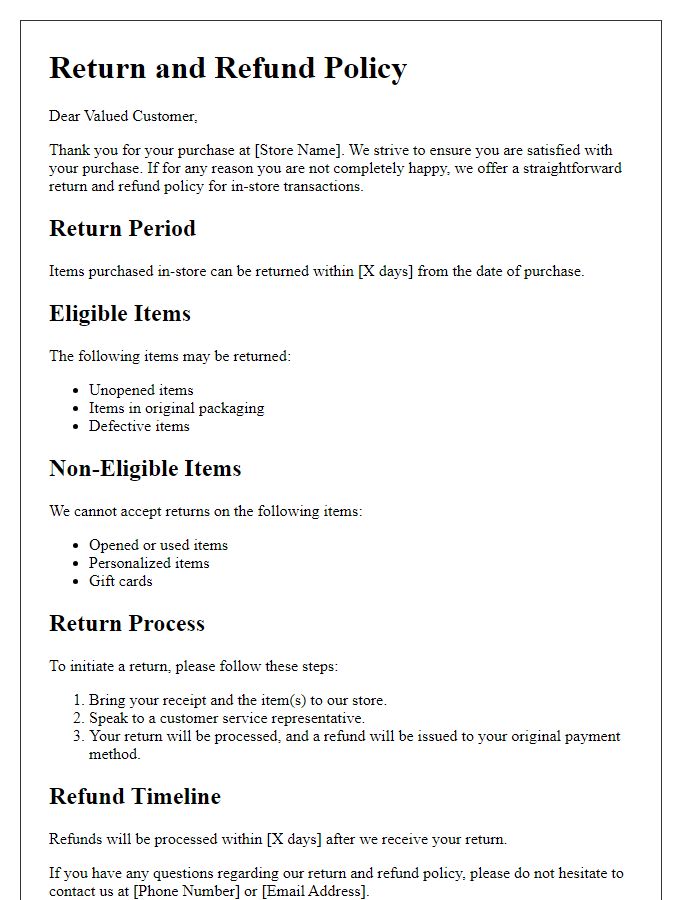
Letter template of retail return and refund policy for limited-time promotions
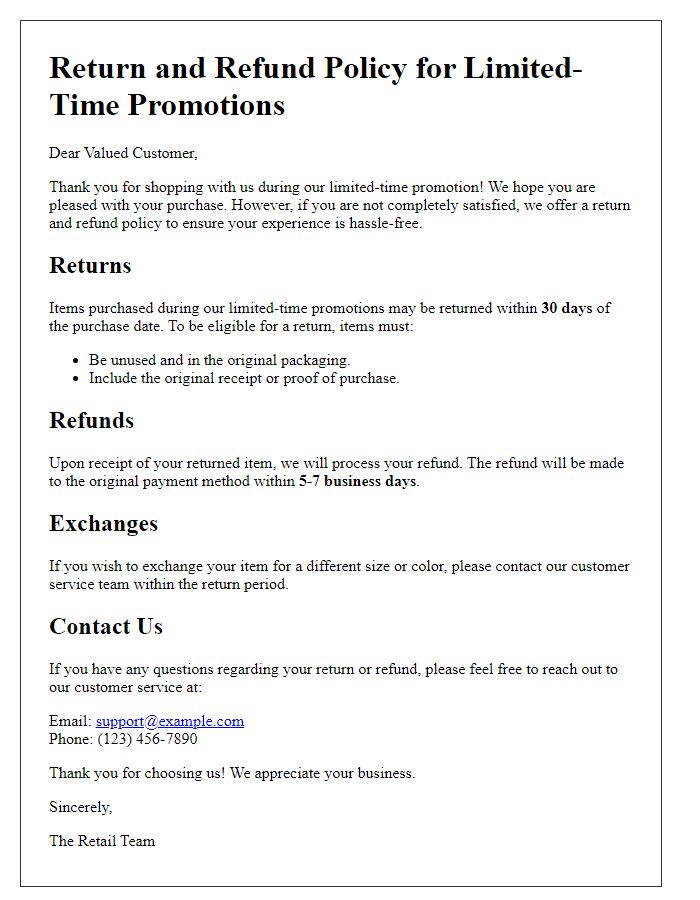
Letter template of retail return and refund policy for personalized products


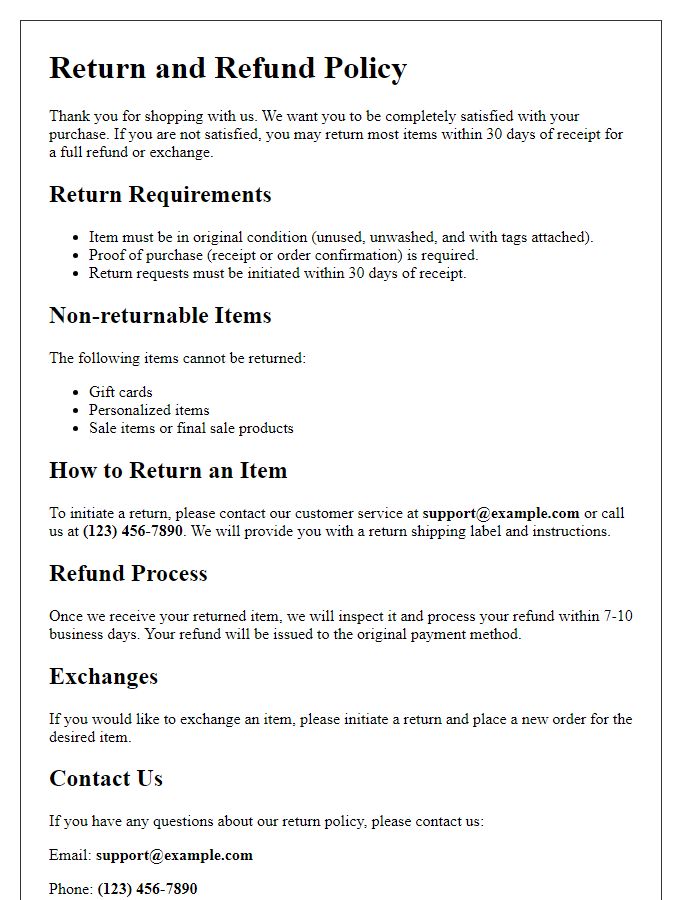
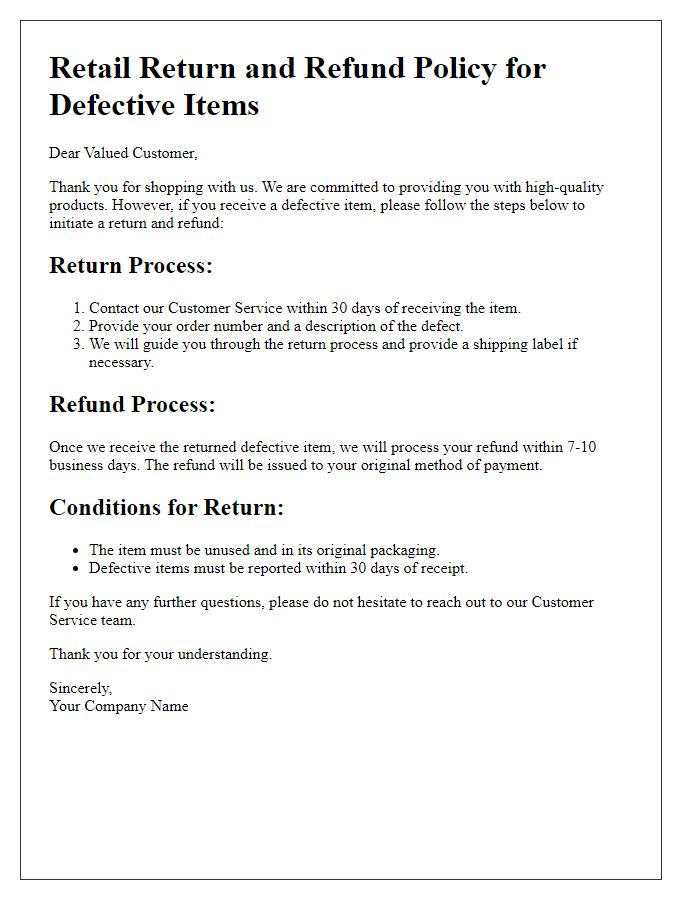
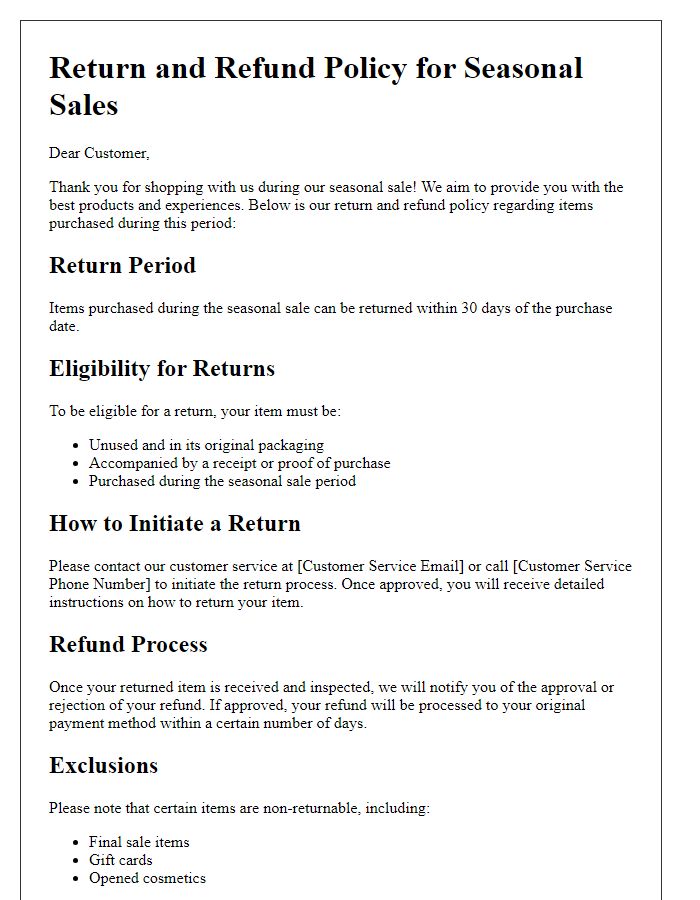
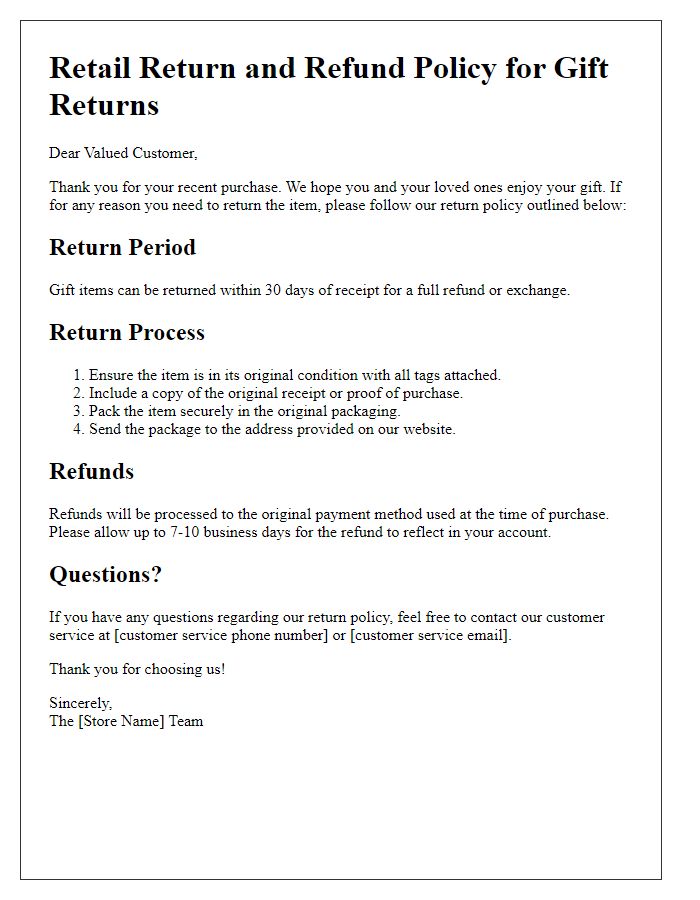
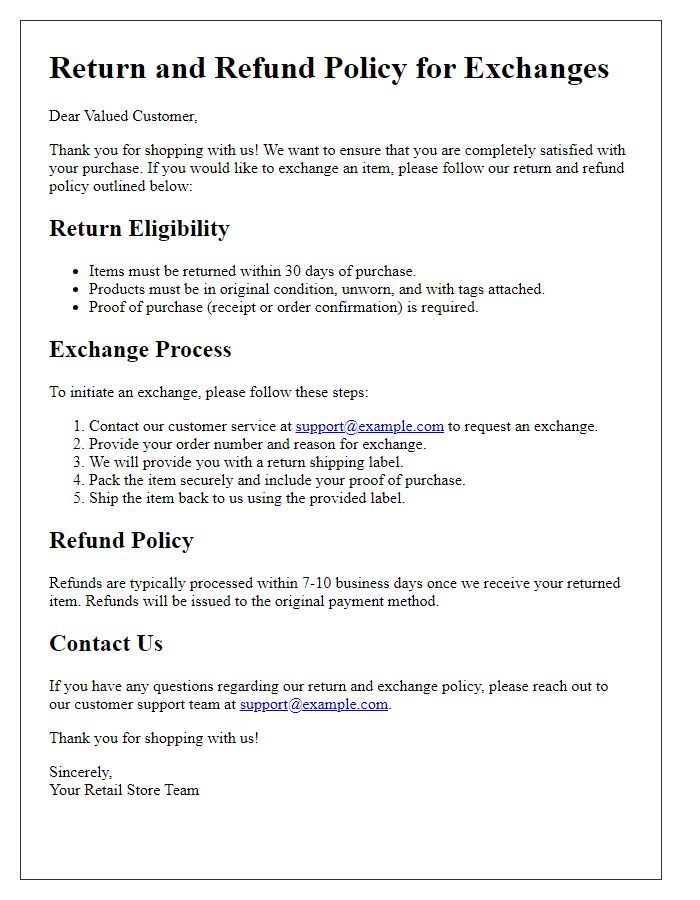
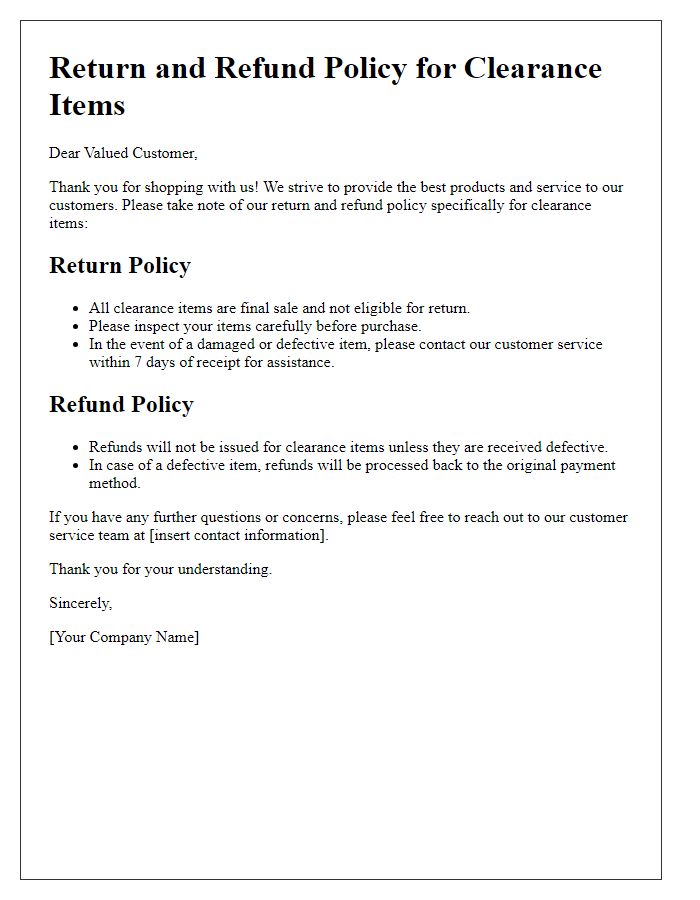
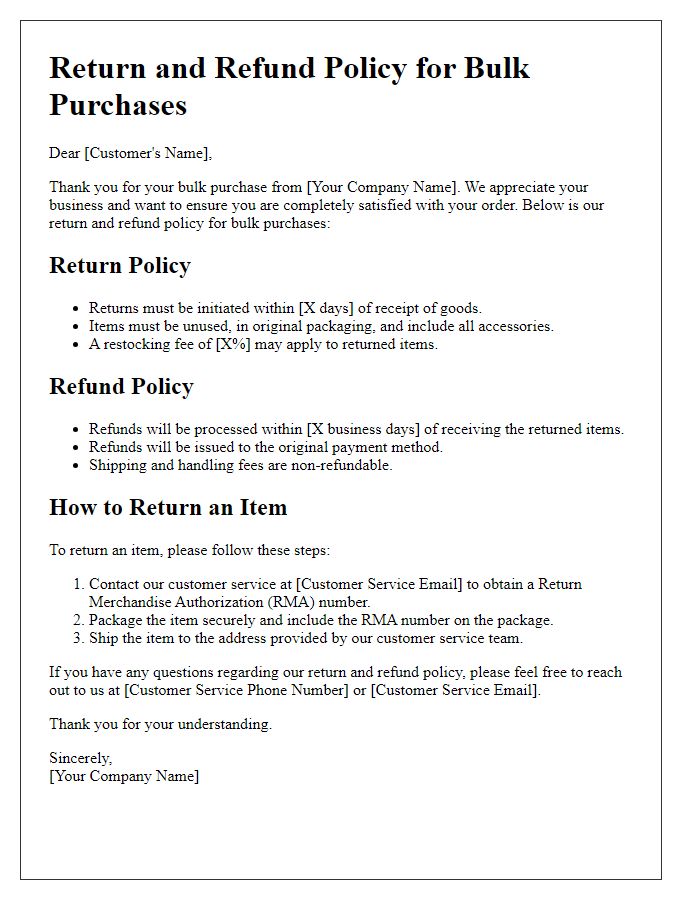





Comments